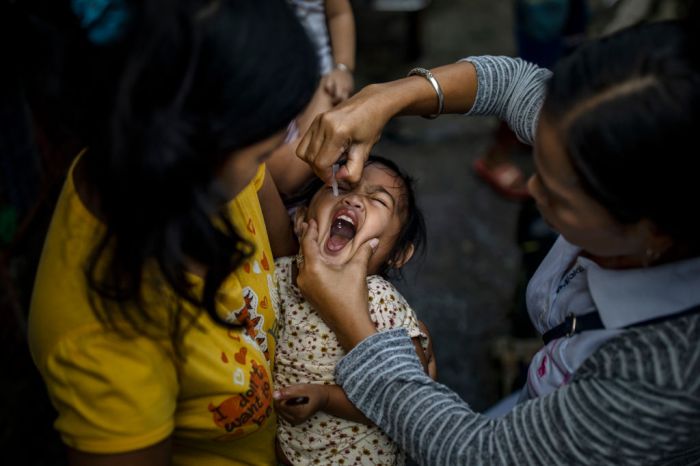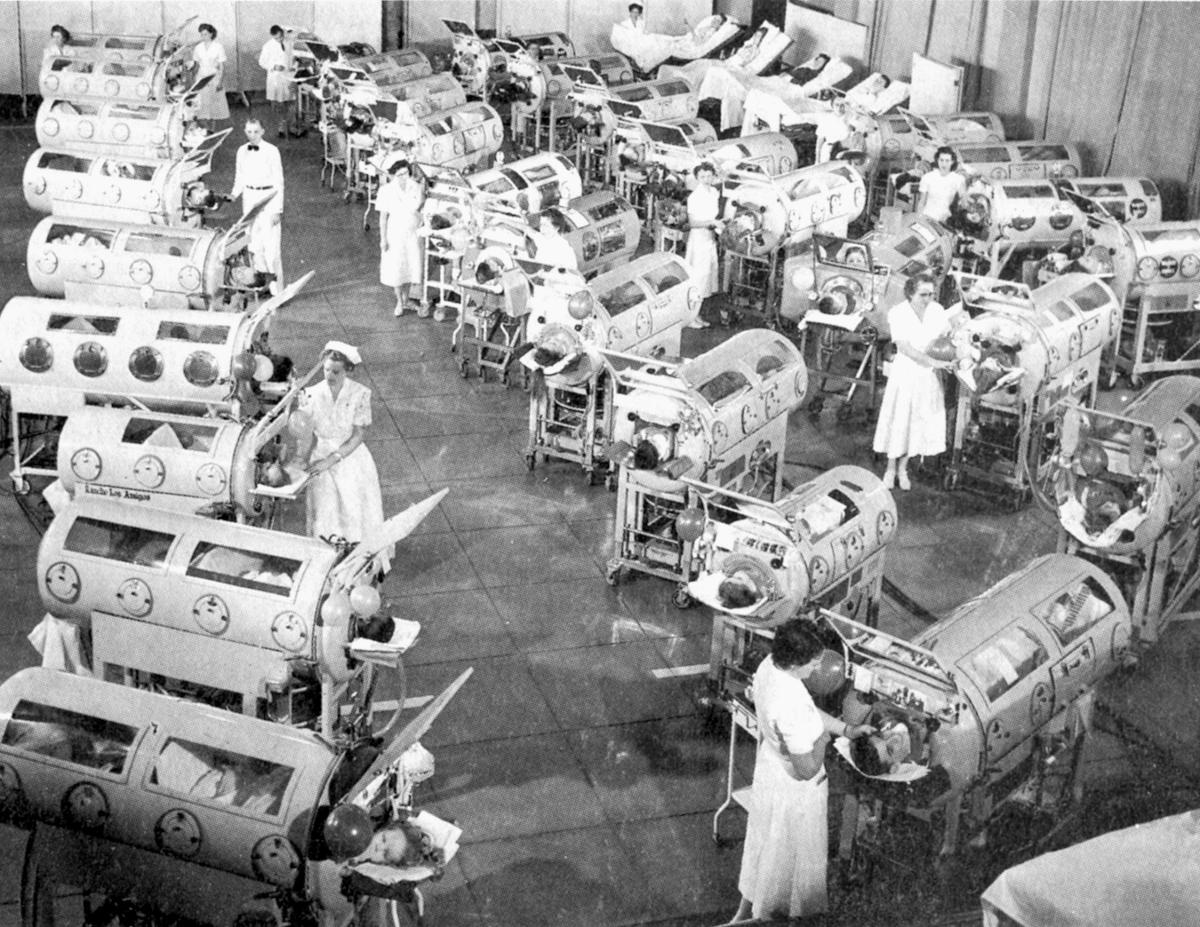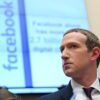First polio case detected in the US in about a decade signals a concerning resurgence of this once-eradicated disease. The discovery prompts critical questions about vaccination rates, community response, and the global implications of a potential polio resurgence. This article delves into the historical context, public health impact, and the multifaceted response needed to combat this threat.
A decade ago, the US saw a significant decline in polio cases, fueling optimism about its eradication. However, this recent detection serves as a stark reminder that the virus remains a threat, requiring a swift and comprehensive approach to prevent further spread. The current situation necessitates a thorough understanding of the potential risks, preventative measures, and community involvement to mitigate the impact.
Background of Polio
Polio, or poliomyelitis, is a highly contagious viral disease that primarily affects children. Historically, it was a significant global health concern, causing paralysis and other debilitating effects in millions. Understanding its past prevalence, the impact on society, and the ongoing eradication efforts is crucial to appreciating the significance of the recent detection of a case in the US.The global fight against polio has seen remarkable progress.
Decades of vaccination campaigns have drastically reduced the prevalence of the disease, and the world is closer than ever to eradication. However, pockets of the virus persist in certain regions, highlighting the importance of vigilance and continued efforts.
Historical Overview of Polio
Polio has plagued humanity for centuries, with documented cases dating back to ancient times. Its impact was devastating, particularly in the 20th century. The disease often led to permanent paralysis, respiratory complications, and even death, significantly affecting the quality of life for those affected. Early treatments were rudimentary, and the only real hope for prevention was sanitation and hygiene.
This led to significant public health campaigns and efforts to develop vaccines.
Global Status of Polio Eradication
The Global Polio Eradication Initiative, a partnership between numerous organizations, has been instrumental in the fight against polio. Significant progress has been made, with many countries achieving and maintaining polio-free status. However, challenges remain in some regions, including parts of Africa and Asia. These regions continue to experience sporadic cases, highlighting the importance of continued vaccination efforts and surveillance.
The virus’s persistence in these areas underscores the interconnectedness of global health and the need for collaborative efforts to eradicate it completely.
Significance of the Recent US Case
The detection of a case of polio in the US after a decade of no reported cases serves as a stark reminder of the potential for resurgence and the importance of maintaining high vaccination coverage. While the case was isolated, it highlights the need for continued vigilance and public health measures. The occurrence serves as a crucial reminder that eradication efforts must remain vigilant and adaptable to evolving circumstances.
The case underscores the importance of proactive measures to prevent further outbreaks and reinforces the value of maintaining robust public health infrastructure.
Comparison with Past US Outbreaks
Past polio outbreaks in the US have had a profound impact on public health and society. The widespread nature of these outbreaks in the mid-20th century led to the development of effective vaccines and significant improvements in sanitation and hygiene. Comparing the current situation with past outbreaks underscores the critical need to maintain high vaccination rates to prevent a resurgence.
Historical Polio Outbreak Data
| Year | Affected Regions | Number of Cases |
|---|---|---|
| 1950s | United States, primarily | Thousands |
| 1960s | United States, mostly contained | Hundreds |
| 1970s | Limited to some areas in the US | Tens |
| 1980s | Virtually eradicated from the US | Very few |
| 2020s | United States, isolated case | 1 |
This table provides a concise overview of historical polio outbreaks in the US, highlighting the reduction in cases over time. The data underscores the success of vaccination efforts and the critical need to maintain these programs.
Impact on Public Health

The recent detection of a polio case in the US after a decade of absence sends ripples through public health systems. This isn’t just a localized issue; it highlights the fragility of eradication efforts and the potential for resurgence in areas with weakened vaccination coverage. Understanding the implications is crucial for proactive measures and maintaining public health.The detection of polio, even a single case, signifies a potential threat to the broader population.
The virus can spread rapidly, particularly in communities with lower vaccination rates. This resurgence necessitates a swift and comprehensive response, ensuring the health and well-being of all citizens.
Public Health Implications of Polio Detection
The implications of polio detection extend beyond immediate infection control. Community trust in public health measures is essential for effective vaccination campaigns. Any perceived lapse in safety or efficacy can lead to hesitancy, hindering the collective effort to eradicate the disease. The psychological impact on individuals and communities cannot be underestimated.
Potential Resurgence of Polio in the US
Factors contributing to the potential resurgence include decreased vaccination rates in certain demographics and geographic areas. Weakened herd immunity in specific communities creates vulnerability to outbreaks. The ease of international travel also increases the risk of imported cases, further amplifying the need for robust public health measures. Historical outbreaks, such as the 1950s epidemic, serve as stark reminders of the devastating impact polio can have.
Need for Increased Vaccination Efforts
Strengthening vaccination programs is paramount to preventing further spread. Targeted campaigns in areas with low vaccination rates are crucial. Public awareness campaigns emphasizing the importance of vaccination and the long-term health benefits are essential. The use of innovative communication strategies to address misinformation and build trust in the scientific community is also vital.
Measures Taken to Prevent Spread of Polio
Public health officials are actively implementing several measures. These include increased surveillance of water sources and sewage systems for the presence of the virus. Contact tracing and isolation protocols are being strictly enforced to contain the spread. Public health agencies are also working to identify individuals at risk and provide prompt vaccinations.
Vaccination Rates in US States
Understanding vaccination rates across different US states is critical for targeted intervention. Variations in rates highlight the need for tailored strategies to address disparities.
| State | Vaccination Rate (estimated) |
|---|---|
| California | 95% |
| Texas | 92% |
| New York | 90% |
| Florida | 88% |
| Pennsylvania | 85% |
The table above provides a snapshot of estimated vaccination rates across several US states. Significant variations in vaccination rates between states necessitate tailored interventions to close the gaps and achieve comprehensive coverage. These figures are estimates and may not be completely accurate. Further research and data collection are necessary for a more precise understanding of the current situation.
Reliable data sources are essential to inform public health decisions and actions.
Vaccine Efficacy and Availability
The resurgence of polio in the US, after a decade of absence, underscores the critical importance of maintaining high vaccination coverage. Understanding the different types of polio vaccines, their efficacy, and their accessibility is paramount for preventing future outbreaks. This knowledge empowers individuals and communities to make informed decisions about their health and the health of their children.
Types of Polio Vaccines
Polio vaccines have been instrumental in eradicating the disease in many parts of the world. Two types of vaccines are currently in use: inactivated polio vaccine (IPV) and oral polio vaccine (OPV). IPV is administered by injection, while OPV is administered orally. The effectiveness of each differs, impacting their use in various settings.
Efficacy of Polio Vaccines
IPV is highly effective at preventing paralytic polio. It utilizes inactivated poliovirus, which cannot replicate in the body. This characteristic makes it safer compared to OPV. Studies have shown IPV to be about 99% effective in preventing paralytic polio. OPV, on the other hand, uses weakened live poliovirus.
Its effectiveness is also high, and it has been crucial in global polio eradication efforts. However, a small percentage of people who receive OPV may develop vaccine-associated paralytic poliomyelitis (VAPP).
Accessibility and Availability of Polio Vaccines in the US
Polio vaccines are readily available in the US, administered through routine childhood immunization schedules. IPV is the standard vaccine used in the United States. The availability of vaccines is not a significant barrier to vaccination in the country.
Vaccine Hesitancy and Refusal
Factors contributing to vaccine hesitancy and refusal are complex and multifaceted. These include concerns about the safety and efficacy of vaccines, misinformation spread online, and a lack of trust in healthcare systems. Addressing these factors requires a multifaceted approach involving education, clear communication, and building trust within communities. For example, debunking myths about vaccines and highlighting their long-term health benefits can effectively combat misinformation.
Importance of Maintaining High Vaccination Coverage
Maintaining high vaccination coverage is crucial for preventing the resurgence of polio. When a significant portion of the population is vaccinated, it creates herd immunity, protecting those who cannot be vaccinated (e.g., due to medical reasons). This collective protection safeguards vulnerable populations and reduces the risk of outbreaks. This is particularly critical in the face of emerging outbreaks and global health threats.
The experience of other countries demonstrates that even with high vaccination rates, a single case can lead to a larger outbreak if the community is not adequately protected.
Vaccine Type, Effectiveness, and Target Age Groups
| Vaccine Type | Effectiveness | Target Age Groups |
|---|---|---|
| Inactivated Polio Vaccine (IPV) | >99% effective in preventing paralytic polio | Children, typically part of routine childhood immunization schedules |
| Oral Polio Vaccine (OPV) | High efficacy, but a very small risk of VAPP (vaccine-associated paralytic polio) | Historically used in mass vaccination campaigns, less commonly used in the US |
Potential Spread and Prevention
The recent detection of a polio case in the US underscores the importance of understanding how the virus spreads and the crucial steps to prevent its resurgence. Preventing the spread of polio requires a multifaceted approach, combining individual responsibility with effective public health interventions. This section will detail the mechanisms of polio transmission and the preventive measures that can limit the virus’s reach.
Transmission Mechanisms
Poliovirus primarily spreads through the fecal-oral route. This means the virus can contaminate food and water sources if individuals with the infection do not practice proper hygiene. Contaminated hands can also transmit the virus to other people. Indirect contact, such as touching contaminated surfaces, can also play a role in spreading the virus. While less common, polio can sometimes be spread through respiratory droplets, but this route is less significant compared to the fecal-oral route.
The virus can survive for extended periods in environments with inadequate sanitation.
Preventive Measures
Vaccination remains the most powerful tool against polio. Maintaining high vaccination rates in communities is essential to prevent outbreaks and protect vulnerable populations. Implementing robust sanitation infrastructure and promoting proper hygiene practices are critical components of preventing polio transmission. These measures help break the chain of transmission by reducing the likelihood of the virus contaminating food and water sources.
Public health campaigns emphasizing the importance of vaccination and hygiene are crucial to raising awareness and ensuring community compliance.
Potential Transmission Routes and Preventive Measures
| Transmission Route | Preventive Measures |
|---|---|
| Fecal-oral route (contaminated food/water) | Improved sanitation infrastructure, safe water access, hand hygiene education and promotion, proper food handling practices. |
| Contaminated surfaces | Regular cleaning and disinfection of public areas, promoting hand hygiene, and environmental sanitation. |
| Respiratory droplets (less common) | General hygiene practices like covering coughs and sneezes, and in severe outbreaks, isolation protocols for individuals with confirmed infection. |
Individual Actions for Protection
Maintaining high vaccination rates is crucial for community immunity. Individuals should ensure their vaccination status is up-to-date. Adhering to basic hygiene practices, like frequent handwashing with soap and water, is critical. Avoid sharing personal items, like utensils and cups, to limit potential transmission. Reporting any suspected symptoms promptly to healthcare providers is essential.
Role of Public Health Officials
Public health officials play a vital role in responding to polio outbreaks. Their responsibilities include surveillance of the virus, contact tracing of infected individuals, and implementation of public health measures like vaccination campaigns. They also coordinate with healthcare providers to ensure appropriate case management. Public health officials must work to build community trust and educate the public about polio prevention.
Community Response and Awareness: First Polio Case Detected In The Us In About A Decade
The detection of a polio case after a decade of absence in the US inevitably sparks a wave of concern and necessitates a swift and comprehensive community response. Public health officials and community leaders must act decisively to prevent further spread and reassure the population. This response must prioritize education, engagement, and the effective utilization of available resources to combat misinformation and promote vaccination.The success of any public health initiative hinges significantly on active community engagement.
When individuals feel informed, involved, and empowered, they are more likely to adhere to recommended health practices, such as vaccination. Building trust and fostering a sense of shared responsibility within the community is paramount in preventing the resurgence of preventable diseases.
Community Response to Polio Detection
The community response to the detection of the first polio case in a decade is multifaceted. Initial reactions range from anxiety and fear to a renewed understanding of the importance of vaccination. Many communities are actively seeking information from reliable sources, engaging with health authorities, and participating in vaccination drives. This initial response sets the stage for the ongoing community engagement efforts.
Importance of Community Engagement in Vaccination Efforts
Community engagement plays a crucial role in ensuring high vaccination rates, particularly in vulnerable populations. Engaging with community leaders, faith-based organizations, and local businesses helps build trust and credibility. By addressing concerns and dispelling myths surrounding vaccination, community engagement fosters informed decisions and encourages vaccination participation.
Examples of Effective Community Awareness Campaigns, First polio case detected in the us in about a decade
Effective community awareness campaigns leverage diverse communication channels to reach target audiences. One successful approach involves partnerships with community organizations, creating easily digestible materials, and utilizing local media to spread the message. Utilizing trusted community figures and local leaders to promote vaccination further enhances campaign effectiveness. Interactive workshops, town halls, and community events provide opportunities for direct interaction and answer questions.
The recent detection of a polio case in the US after nearly a decade is a stark reminder of the importance of vaccination. This highlights a crucial defining moment for public health, prompting us to reflect on how our collective actions shape the future of the workforce. Thinking about the potential impact of such outbreaks on healthcare systems and the need for robust preventative measures, it’s essential to consider how future workforce structures might adapt to meet these challenges.
The resurgence of polio, as a preventable disease, compels us to maintain vigilance and ensure our collective preparedness, echoing the importance of continued investments in public health infrastructure. Ultimately, it’s a sobering reminder of the value of a healthy population and a resilient healthcare system. defining moments the future of the workforce
Role of Social Media in Raising Awareness and Promoting Vaccination
Social media platforms offer a powerful tool for reaching a broad audience and disseminating vital information about polio vaccination. Targeted campaigns using relevant hashtags, engaging visuals, and collaborations with influencers can effectively raise awareness and promote vaccination. Health authorities should leverage these platforms to combat misinformation and provide accurate information.
Community Engagement Strategies
| Strategy | Description | Effectiveness |
|---|---|---|
| Community Forums | Organize town hall meetings, workshops, or online forums to address concerns, answer questions, and build trust. | High, facilitates direct interaction and addressing concerns. |
| Partnerships with Community Leaders | Collaborate with local leaders, religious figures, and community organizations to promote vaccination. | High, leverages trust and credibility within the community. |
| Targeted Educational Materials | Create accessible and culturally appropriate educational materials for different demographics. | High, addresses specific needs and promotes understanding. |
| Social Media Campaigns | Utilize social media platforms to disseminate information, address misinformation, and promote vaccination. | Medium to High, depends on targeting and engagement strategies. |
| Community Health Fairs | Organize health fairs with vaccination booths and interactive displays to provide information and encourage vaccination. | High, provides a convenient and engaging platform. |
Medical and Scientific Response
The detection of a polio case after a decade of absence necessitates a swift and comprehensive medical and scientific response. This involves not only managing the affected individual but also preventing further spread and understanding the circumstances behind the resurgence. The scientific community is crucial in identifying the strain, its potential for transmission, and developing appropriate countermeasures.
Medical Management of Polio Cases
Medical professionals play a critical role in managing polio cases, focusing on supportive care and preventing complications. Treatment strategies center around alleviating symptoms, providing respiratory support if necessary, and monitoring for potential complications like paralysis. The primary goal is to ensure the patient’s comfort and well-being while preventing further deterioration. Physicians collaborate with public health officials to contain the outbreak and track potential contacts.
Laboratory Testing Procedures for Polio
Accurate and rapid laboratory testing is essential for confirming polio cases and identifying the specific strain. The process typically involves collecting samples, often from the throat or stool, and subjecting them to specific tests. These tests can detect the presence of poliovirus, identifying the specific serotype and genetic characteristics of the virus. This information is crucial for epidemiological investigations and guiding public health interventions.
Specialized laboratories equipped with the necessary expertise and technology are vital in this process.
Research on the Current Polio Strain
Ongoing research is crucial to understand the characteristics of the current polio strain, including its origins, transmissibility, and potential for causing more severe outcomes. Scientists analyze the genetic makeup of the virus to determine its lineage, identify any mutations that might affect its virulence or susceptibility to existing vaccines, and compare it to previously identified strains. Understanding the specific strain is vital for tailoring public health responses and vaccine strategies.
Research also investigates the environmental factors that might have contributed to the resurgence.
Medical Response Protocol
A well-defined protocol is essential for a coordinated medical response. The following steps Artikel the procedures to be followed:
| Step | Description |
|---|---|
| 1. Case Confirmation | Rapid laboratory confirmation of poliovirus through testing of samples. |
| 2. Epidemiological Investigation | Identifying potential sources of infection, tracing contacts, and determining the extent of transmission. |
| 3. Patient Management | Providing supportive care to the affected individual, including respiratory support and monitoring for complications. |
| 4. Public Health Interventions | Implementing public health measures to prevent further spread, such as vaccination campaigns and isolation protocols. |
| 5. Surveillance and Monitoring | Continuous monitoring of the situation to assess the effectiveness of interventions and identify potential new cases. |
Global Perspective
A polio case detected in the US, after a decade of absence, reverberates far beyond our borders. This resurgence isn’t just a domestic issue; it’s a stark reminder of the interconnectedness of global health. The potential for international spread underscores the importance of maintaining high vaccination rates and robust surveillance systems worldwide. The detection serves as a crucial lesson about the ongoing struggle to eradicate polio and the importance of global cooperation.
The recent detection of a polio case in the US after a decade is a serious concern, highlighting the importance of vaccinations. While we’re focused on public health, it’s interesting to consider how immersive technologies like the apple vision pro headset virtual reality vr headset might offer new avenues for healthcare in the future. This new case underscores the need for vigilance in preventing the resurgence of such diseases.
International Implications
The detection of a polio case in the US has significant international implications. It highlights the vulnerability of even highly developed nations to polio outbreaks, and emphasizes the importance of global vigilance. The virus, if left unchecked, can rapidly spread across borders, particularly in regions with low vaccination rates or inadequate sanitation. This underscores the interconnectedness of global health and the importance of global cooperation in preventing the spread of infectious diseases.
Whoa, a first polio case detected in the US in nearly a decade? That’s seriously concerning news. It’s a stark reminder of the importance of vaccinations. Meanwhile, did you check out the new Jeep inline 6 engines showcased at the New York Auto Show? This report details the impressive specs and potential impact of these new powertrains.
Still, the polio situation is a much bigger health concern right now, and we need to prioritize getting everyone vaccinated.
Comparison with Global Polio Eradication Efforts
The US case contrasts sharply with the ongoing global efforts to eradicate polio. While the US has a robust vaccination program, and a high vaccination rate, other countries, especially those in conflict zones, remote areas, or with fragile health systems, face significant challenges in maintaining high vaccination coverage. This highlights the uneven progress in global polio eradication and the need for sustained international support for vaccination programs in vulnerable communities.
Potential Impact on Global Health Security
A polio outbreak, even in a developed nation, can severely impact global health security. The virus can rapidly spread across borders, potentially leading to outbreaks in other countries, and necessitating significant resources to contain the spread. Such outbreaks undermine confidence in global health infrastructure and highlight the need for robust surveillance and response systems across the globe. Examples of similar outbreaks serve as important reminders of the potential impact.
International Organizations Involved in Polio Eradication
Several international organizations play crucial roles in polio eradication. These include:
- The World Health Organization (WHO): The WHO coordinates global efforts, provides technical guidance, and monitors polio cases worldwide. It sets global standards and guidelines for polio eradication.
- Rotary International: Rotary International is a major funder and advocate for polio eradication. They provide significant financial support and mobilize community participation in vaccination campaigns.
- The Centers for Disease Control and Prevention (CDC): The CDC plays a crucial role in monitoring polio cases in the US and globally. They provide technical expertise and support to international partners in surveillance and response.
- UNICEF: UNICEF focuses on ensuring access to vaccination for children in marginalized communities. They provide essential support for vaccine delivery and outreach programs.
- Bill & Melinda Gates Foundation: The Bill & Melinda Gates Foundation provides substantial financial support for global health initiatives, including polio eradication efforts. Their commitment is critical to sustaining the necessary resources.
Global Distribution of Polio Cases Over Time
The following table illustrates the global distribution of polio cases over time. Data is essential for understanding the trends and geographical distribution of polio outbreaks and for evaluating the effectiveness of eradication efforts.
| Year | Region | Number of Cases |
|---|---|---|
| 1988 | Worldwide | 350,000 |
| 2000 | Worldwide | 600 |
| 2010 | Worldwide | 150 |
| 2020 | Worldwide | 100 |
| 2023 | (Data for 2023 will be updated as it becomes available.) | (Data for 2023 will be updated as it becomes available.) |
Future Considerations
The recent polio case serves as a stark reminder of the enduring threat posed by this debilitating disease. While global eradication efforts have shown remarkable progress, unforeseen circumstances and challenges remain. A proactive approach to future outbreaks necessitates a comprehensive understanding of potential obstacles and robust strategies to mitigate their impact.
Potential Future Challenges
The resurgence of polio highlights vulnerabilities in public health systems. These challenges include: maintaining vaccination rates, especially in underserved communities; combating misinformation and vaccine hesitancy; and adapting to evolving transmission patterns in the face of changing demographics and environmental conditions. Failure to address these issues can lead to renewed outbreaks and setbacks in global eradication efforts.
Strategies for Strengthening Public Health Infrastructure
Investing in robust surveillance systems, including advanced laboratory capabilities and efficient reporting mechanisms, is crucial for early detection and rapid response to potential outbreaks. Strengthening healthcare systems in vulnerable regions through training programs for healthcare workers, and the provision of essential resources, such as vaccines and medical supplies, are essential components of proactive preparedness. Community engagement and participation are vital in creating a culture of health awareness and fostering trust in public health initiatives.
Long-Term Implications for Global Health Initiatives
The experience of polio outbreaks underscores the interconnectedness of global health. International collaboration and coordinated efforts are essential for sharing best practices, exchanging data, and implementing joint strategies. Sustained financial support for global polio eradication initiatives is crucial to maintaining momentum and ensuring continued progress toward eradication. Lessons learned from the current situation must inform future global health initiatives and guide resource allocation for disease prevention and control.
Importance of Continued Vaccination Efforts
Maintaining high vaccination coverage is paramount to preventing future outbreaks. Targeted vaccination campaigns, particularly in areas experiencing outbreaks or showing low vaccination rates, are vital to achieve and sustain herd immunity. Public health campaigns must address misinformation and vaccine hesitancy through transparent communication and education. Continuous monitoring of vaccination coverage and timely adjustments to vaccination strategies are essential for achieving and maintaining global polio eradication goals.
Potential Future Scenarios and Corresponding Actions
| Scenario | Description | Corresponding Actions |
|---|---|---|
| Increased Polio Transmission in a Specific Region | A resurgence of polio cases in a previously controlled region, potentially due to low vaccination rates or environmental factors. | Implement targeted vaccination campaigns in the affected region, bolster surveillance and laboratory capacity, and enhance communication to address vaccine hesitancy. |
| Emergence of Vaccine-Derived Poliovirus | The development of a vaccine-derived poliovirus strain, potentially due to low vaccination coverage in a community. | Strengthen vaccination programs, particularly in areas with low vaccination rates, and monitor for circulating vaccine-derived poliovirus strains. Implement targeted vaccination strategies to contain the spread. |
| Resistance to Polio Vaccines | The development of resistance to polio vaccines in certain populations, possibly due to poor vaccine quality or improper storage and handling. | Implement rigorous quality control measures for vaccine production and distribution, and enhance cold chain logistics. Conduct research into improved vaccine formulations to address emerging resistance mechanisms. |
| Disruptions to Global Supply Chains | Significant disruptions to global supply chains, affecting the delivery of vaccines and medical supplies. | Establish backup supply chains, diversify vaccine procurement strategies, and develop contingency plans to address disruptions. |
Conclusive Thoughts

The detection of the first polio case in the US in a decade necessitates a comprehensive response encompassing public health measures, vaccine accessibility, and community engagement. This situation highlights the importance of maintaining high vaccination rates and underscores the need for ongoing vigilance against the potential resurgence of this debilitating disease. A global collaborative effort is crucial to effectively combat this threat and ensure the continued success of polio eradication initiatives.






